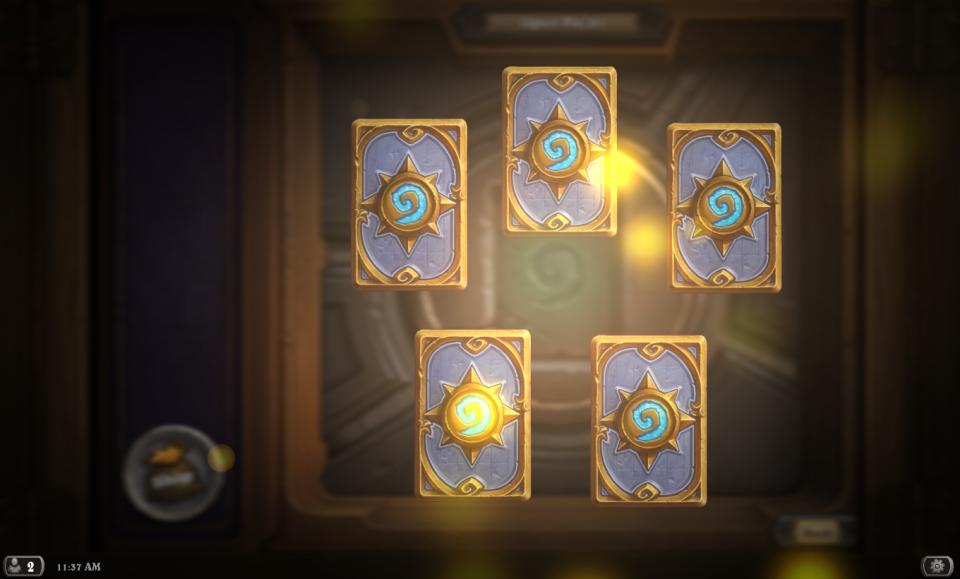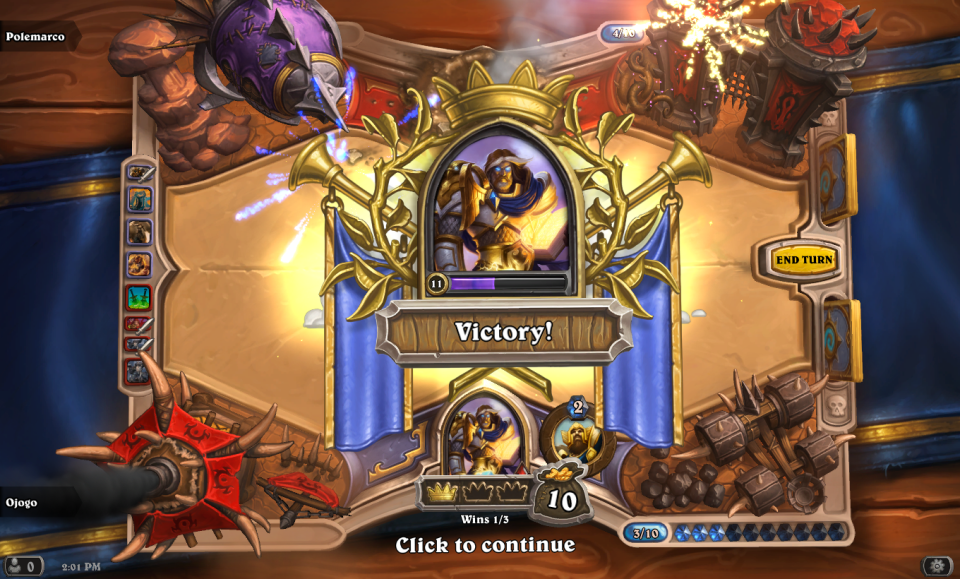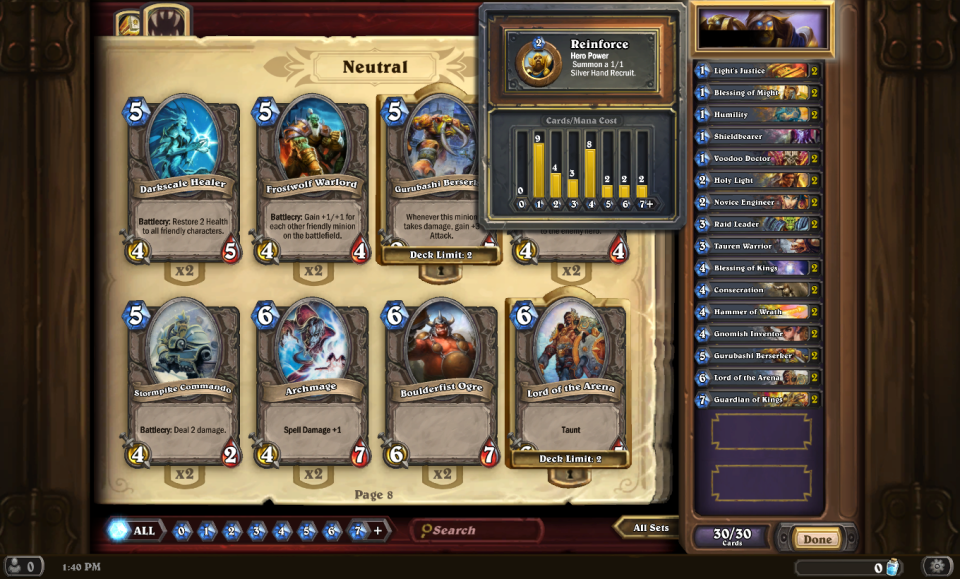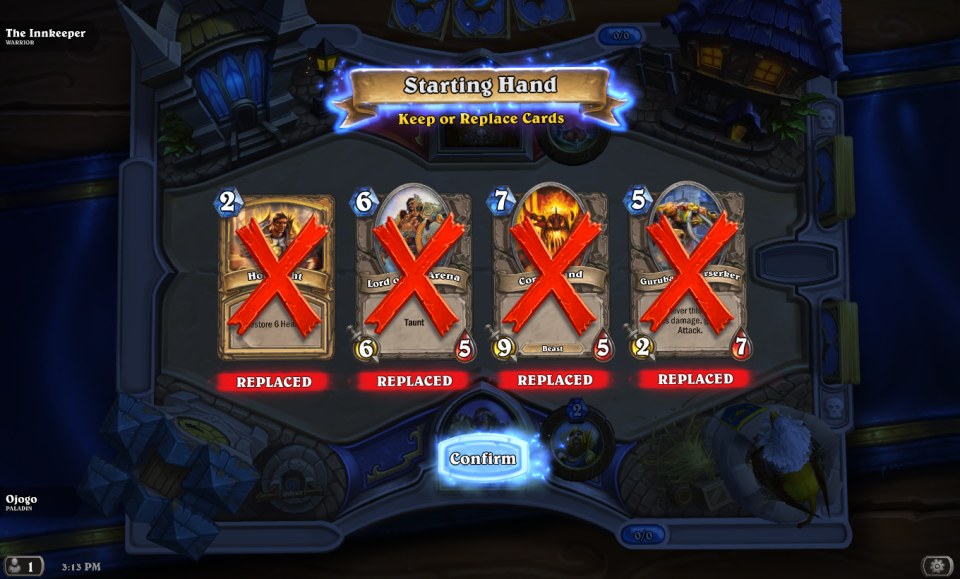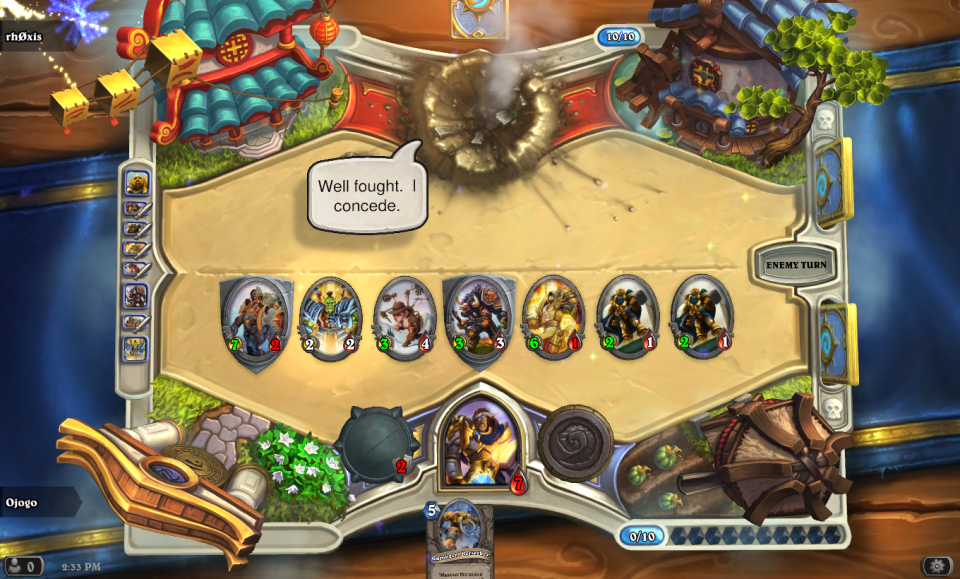Hearthstone deck building guide for newbies
With the Season 3 beta well underway, I’ve decided to take a crack at playing Hearthstone. I had the awful experience of not winning a single match on the first day, to the point where I asked myself if I should just stick to playing Flappy Bird and wave the white flag of surrender.
But I chose to keep playing. After some careful thought, a wee bit of soul-searching and tons of matches against other people, I ended up creating this five-step Hearthstone deck-building guide to help other newbies like myself make a proper competitive deck. Keep in mind that this is not a definitive guide on Heartstone deck building. The aim here is to help you in your early Hearthstone matches.
Step #1: Figure out the deck profile that suits you
Sun Tzu says that if you know the enemy and know yourself, you need not fear the result of a hundred battles. This also applies to your Hearthstone deck. Before you can win those battles, you need to figure out the deck profile that suits your playstyle.
If you’re the type of player that loves to be aggressive, beatdown decks are for you. Beatdown Decks are filled with cards that can pull off multiple attacks in each turn, throw down a crap-ton of damage and overwhelm opponents by sheer amount of units.
If you’re the type of player who wants to take things slow and prefers to mess with your opponent, control decks are the way to go. Control deck users are able to control the pace of the match as they see fit. In Hearthstone, control decks have a wide variety of spells and unit abilities that disrupt your opponent’s attack rhythm.
Once you figure out the deck profile that fits your playstyle, you can now proceed to Step #2.
Step #2: Know the heroes
Under the deck profiles are sub-categories called deck classes. At present, Hearthstone has nine different deck classes to choose from, with each deck class represented by a hero from the World of Warcraft universe. Each hero has his/her own special skill that defines them.
Some skills call for units into the field, while others use spells that deal direct damage to the hero or to units. These classes however, still fall under the beatdown or control deck profiles because their core mechanic either allows them to deal damage or control the game’s pace.
I’ve prepared a list below that provides a brief summary of the nine heroes and classifies them into the beatdown or control deck profiles.
Beatdown decks:
Warrior – A Garrosh Hellscream deck is a very aggressive damage dealing deck. It’s units can take a beating and can hit harder when they are damaged. Some warrior cards can even do self-inflicting damage to activate unit abilities for more damage per turn.
Paladin – An Uther Lightbringer deck works by buffing up your units in the field. Its specialty lies in its capacity to put units into the field while increasing their damage and health output.
Hunter – A Rexxar deck is an expert in dealing direct damage to heroes while still being able to put units into play. Hunter decks swarm opponents with low-stats and low-cost units to damage the opponent.
Shaman – A Thrall deck is more defensive compared to the other beatdown decks on this list. The Shaman’s totem summoning ability provides cheap support that can boost your unit’s abilities on the field. Shamans also have the capacity to switch these defensive units into offensive ones in an instant.
Control Decks:
Rogue – A Valeera Sanguinar deck is great for removing opponent units from the field. It takes advantage of empty fields to dish out direct damage. The Rogue deck also specializes in creating combos that connect with the Valeera’s skill and unit abilities.These combos are hard to set up, but once they’re ready, it’s difficult to stop the pain train from coming.
Mage – A Jaina Proudmoore deck specializes in damaging spells. The Mage skill allows it to take pot shots at units or deal direct damage. It also has the most damaging AOE spells in the game, making it one of the most versatile decks in Hearthstone.
Druid – A Malfurion Stormrage deck specializes in giving you more casting options per turn. Most of its spell cards extend the player’s mana capacity. This allows you to bring out higher cost units or spells earlier than expected. Its skill also allows it to hit units or deal direct damage while providing defense at the same time.
Warlock – A Gul’dan deck loves sacrificing either units or the player’s health to gain advantage. Its unique skill inflicts two damage in exchange for one cards, thus providing card advantage at the cost of your life. This is a hard deck to master, but once you get proper control of Gul’dan, you’ll be hard to beat.
Priest – An Anduin Wrynn deck specializes in prolonging battles till the opponent’s deck runs out of steam. The Priest skill allows it to restore health to a target, making players using a Priest deck a tough nut to crack. The Priest deck isn’t just defensive though; its shadow spells give you the capacity to not just steal or copy your opponent’s cards, but also allows you to control opposing units.
Understanding how each hero and its corresponding deck mechanics work doesn’t just allow a player to broaden his or her choices during deck building. The knowledge will also come in handy when you need to figure out how to beat an opponent.
Step #3: Think of a winning strategy as you build your deck
To be able to bring out your deck’s potential, you need to figure out an optimum winning strategy. Having pre-made strategies in your mind before a match allows you to properly adjust as the situation changes.
By this stage, you will need to have acquired all the hero-exclusive cards. To get these cards, you need to get your hero to level 20. Each level unlocks a hero exclusive card at no cost. These cards are integral to playing proper ranked matches.
Knowing is half the battle, and in Hearthstone, getting all your deck’s hero exclusive cards is the other half.
Step #4: Learn to card scale
Now that you have a winning strategy in mind and all your hero exclusive cards, the next step is the toughest in your Hearthstone deck building experience: mana cost scaling.
In this step you need to figure out the proper balance your deck needs in terms of the mana costs. Cards in Hearthstone cost mana each time you bring them out into the field. Each player starts off with one mana, and their capacity increases with each turn to a maximum of ten mana.
This happens in a lot of unbalanced decks.
Having too many cards with one mana cost will give you an early game advantage but will cost you later in the game. On the other hand, having too many three or higher mana cost cards can put you in a tight spot during early and mid game.
This is the point where the knowledge you acquired while going through the first three steps comes in. Use your strategy, deck profile and hero as your point of reference. You now have the capacity to foresee what cards need to come in to your custom deck. Beatdown decks usually have a lower 1-3 mana cost ratio since they need to attack earlier. Control decks, on the other hand, can afford to have a higher 4-7 mana ratio count since they can regain lost ground once they have their footing.
Step #5: Actually playing the game
The last step in this guide is to focus on playing the game. Once you have your initial custom deck out, you need to play against other people to see if it works. The best way for you to test your deck against other people is through casual play.
Playing against other players allows you to widen your knowledge of the combos that you might have overlooked. This also gives you insight on your cost scaling. In some cases, playing against other players may even turn you away from the deck you’re using and make you switch heroes.
The beauty of deckbuilding games like Hearthstone is that nothing is set in stone. Combinations that you think work in the building stage may not work during actual matches. So learn from defeats and adjust your deck accordingly.
The important part is to have fun and keep on playing!
The post Hearthstone deck building guide for newbies appeared first on Games in Asia.
The post Hearthstone deck building guide for newbies appeared first on Games in Asia.


